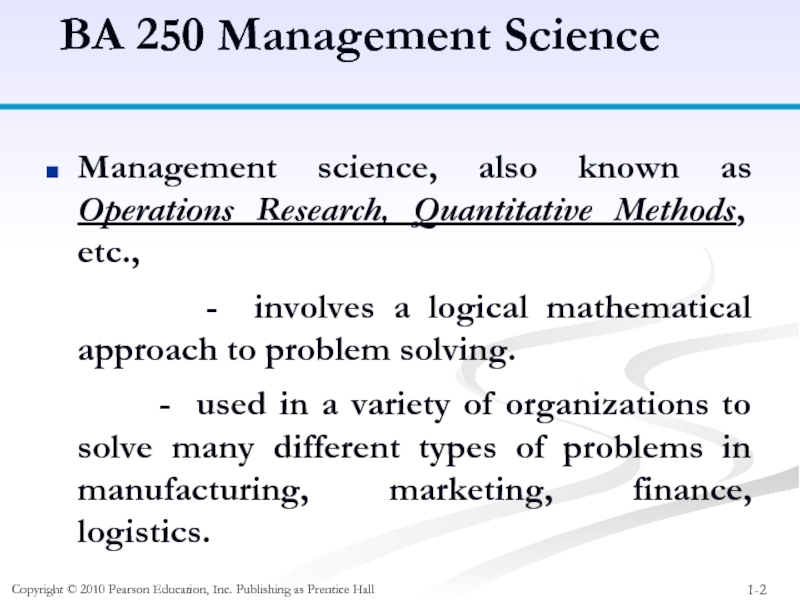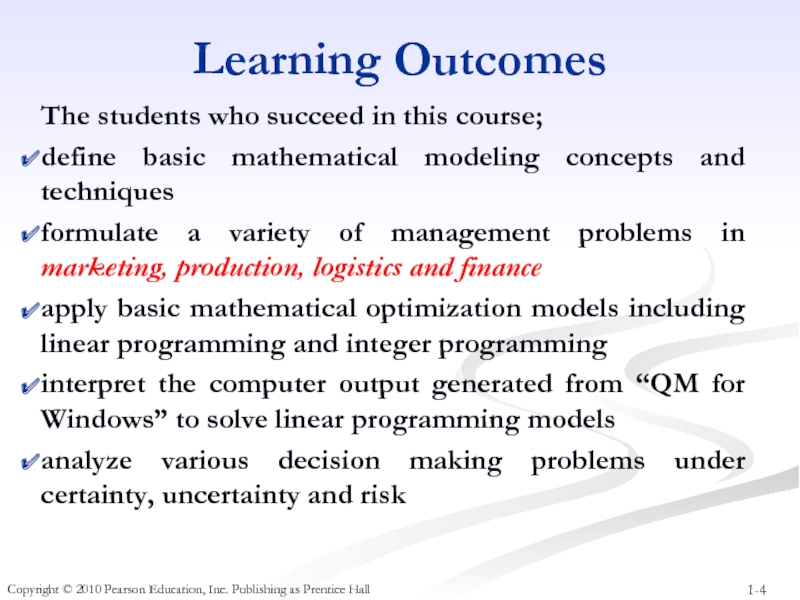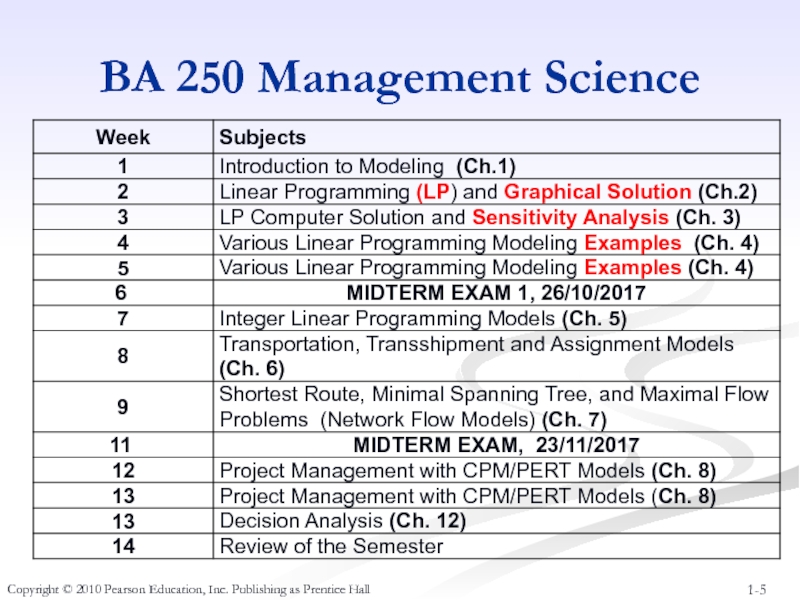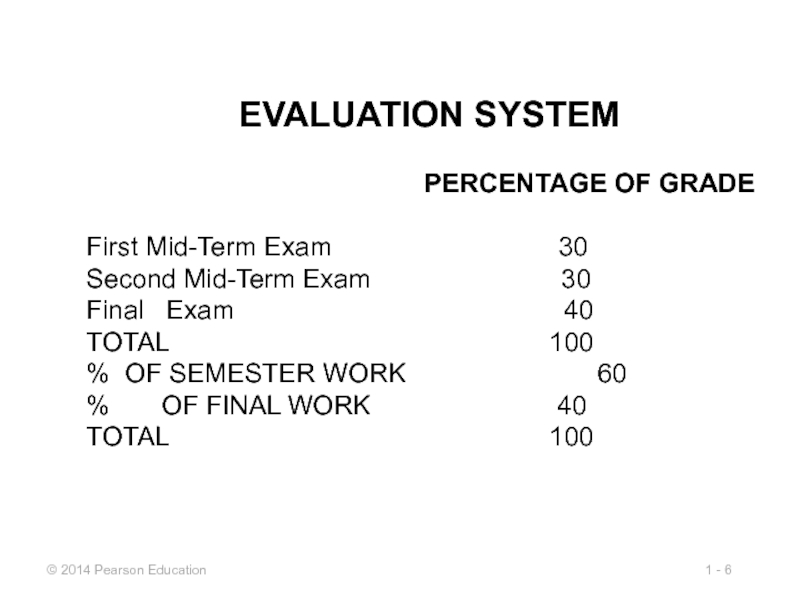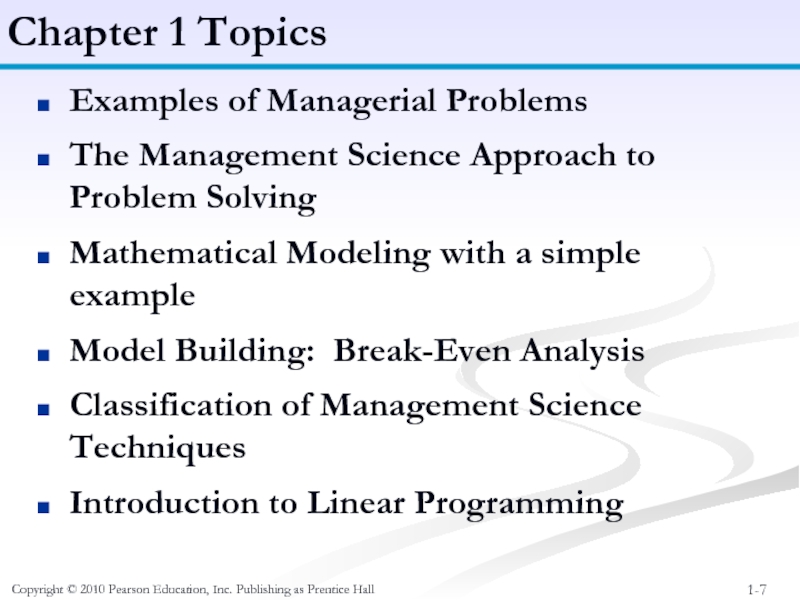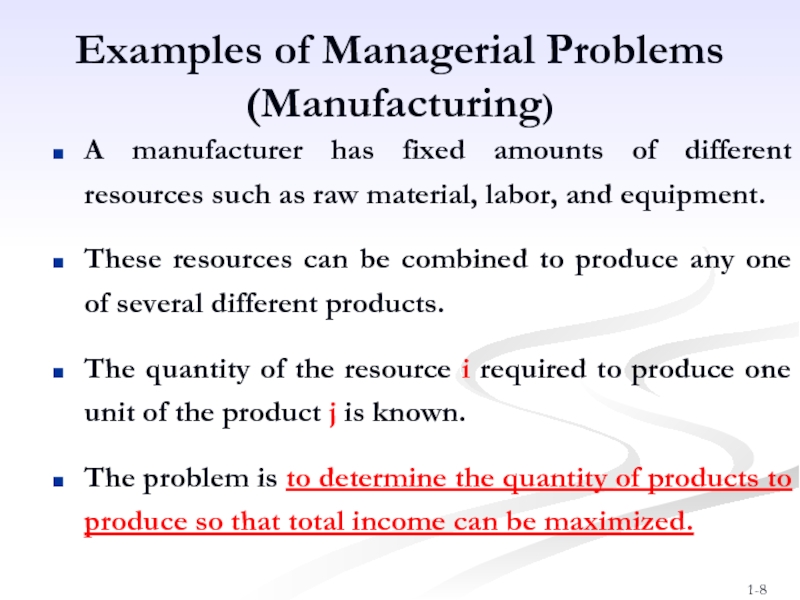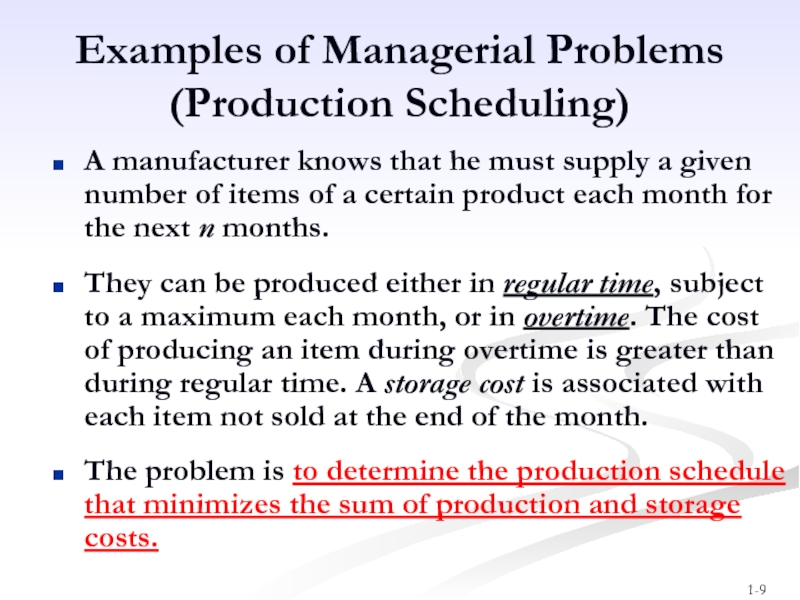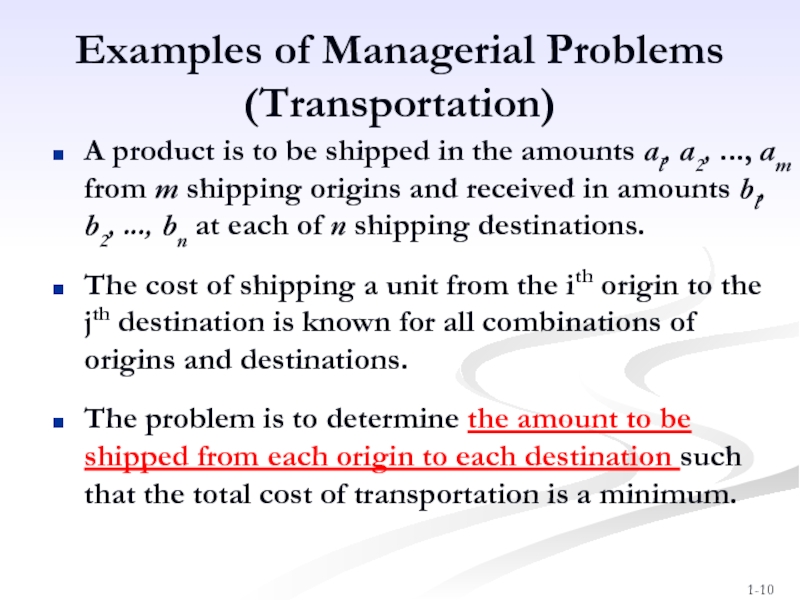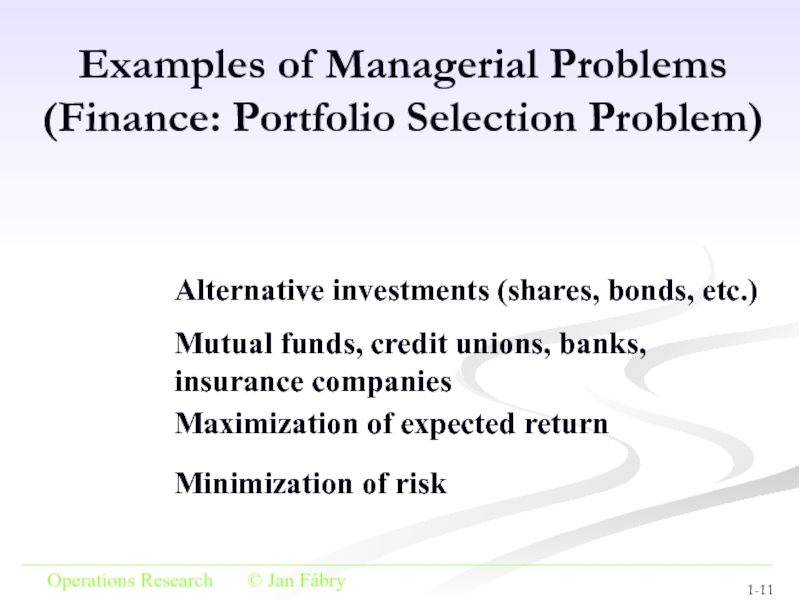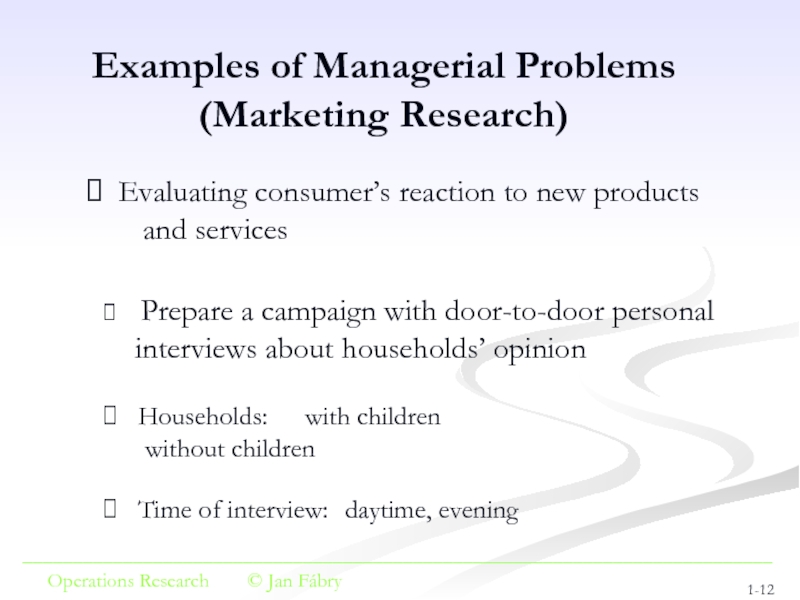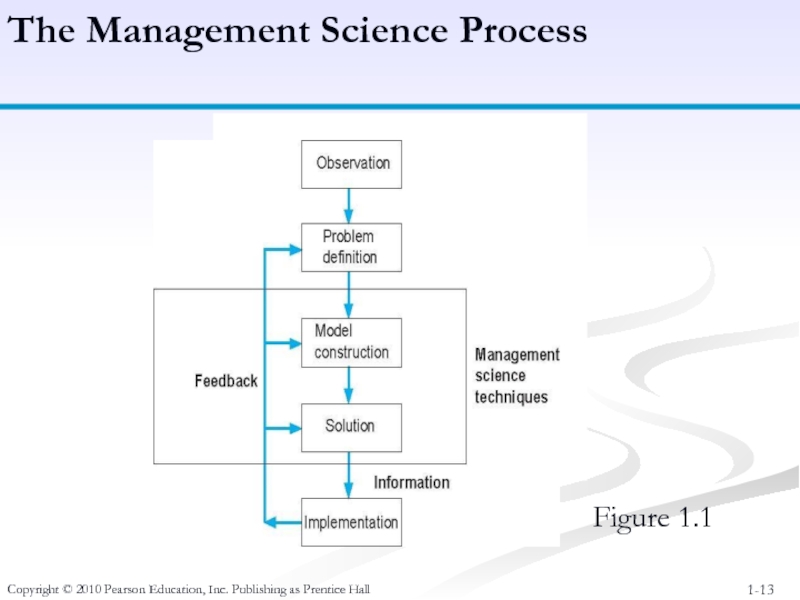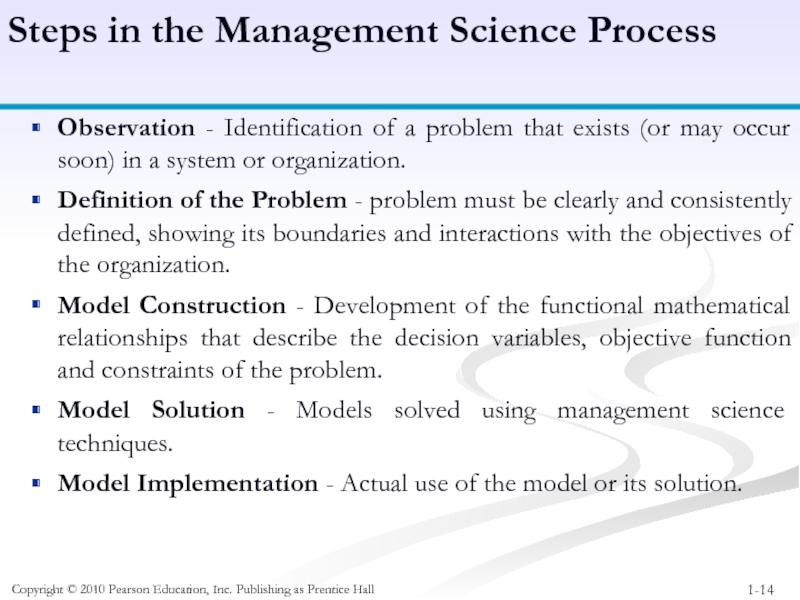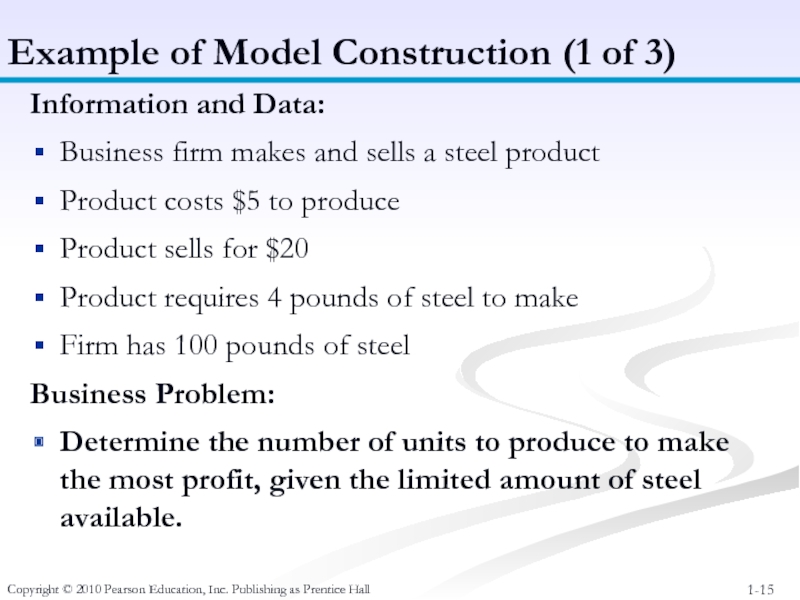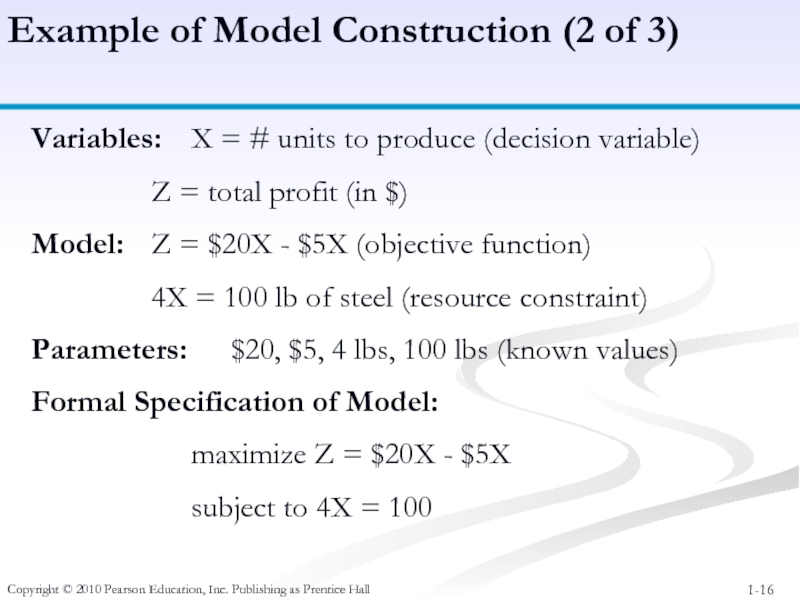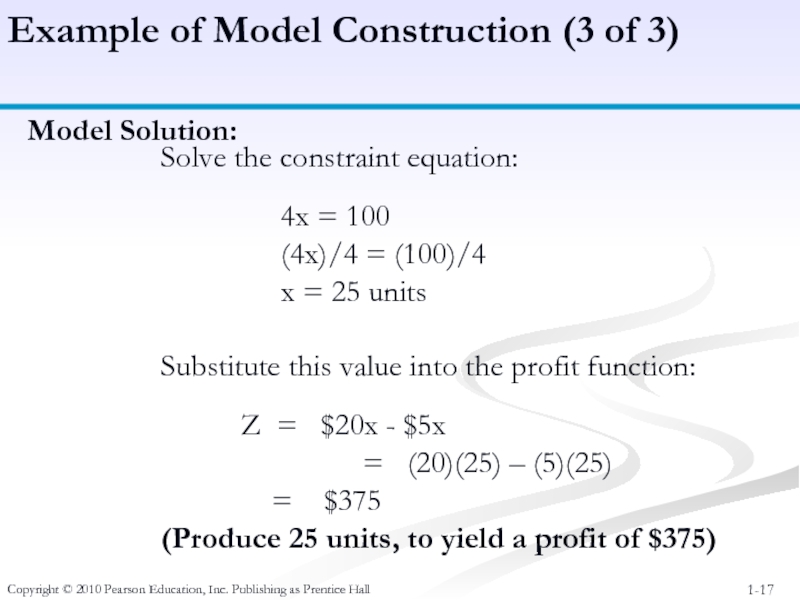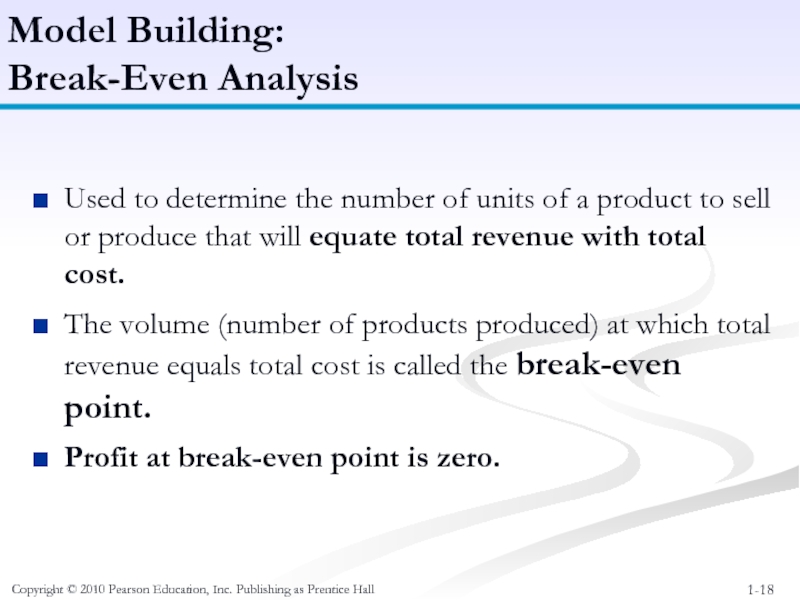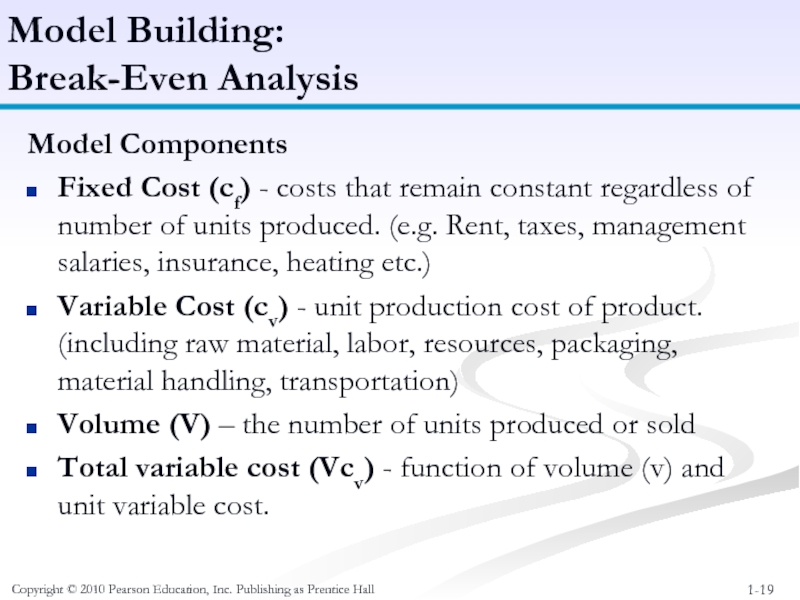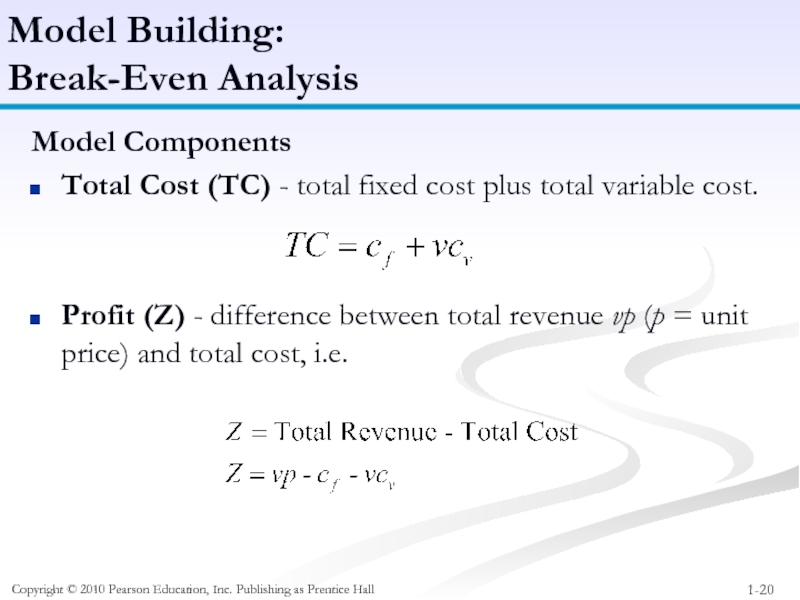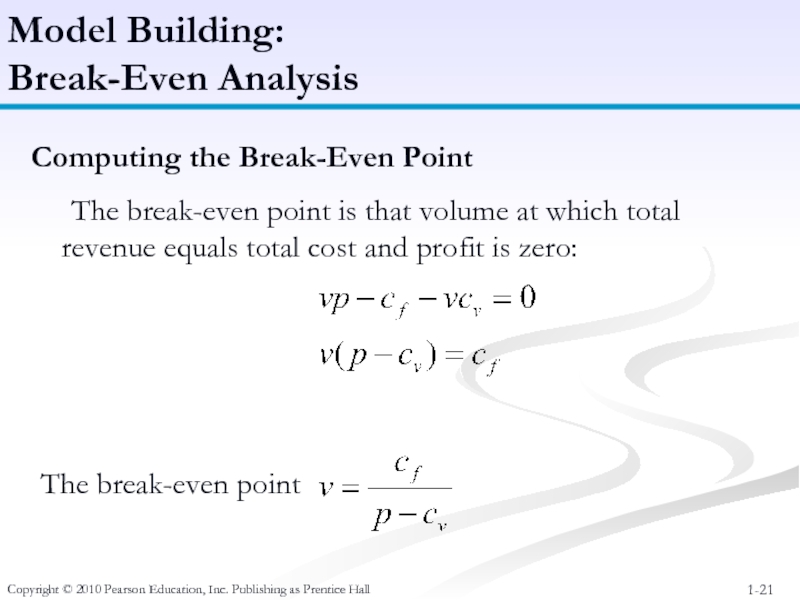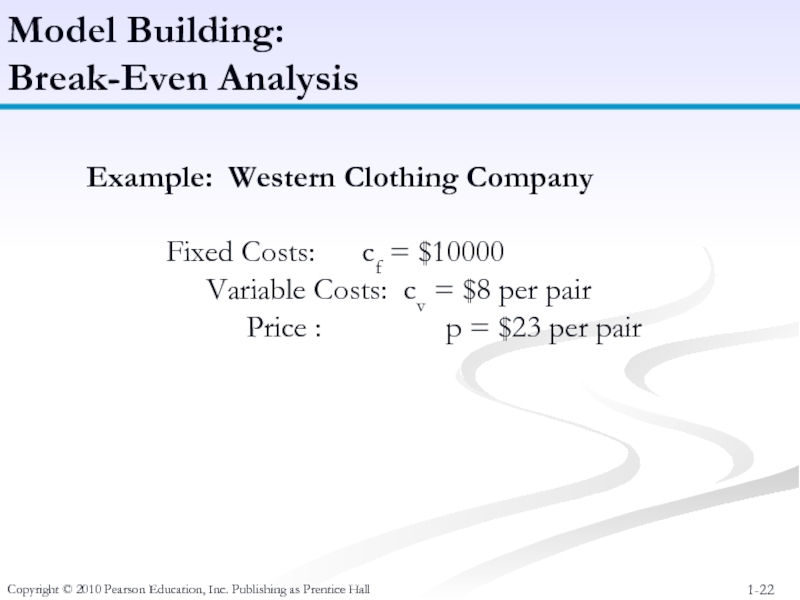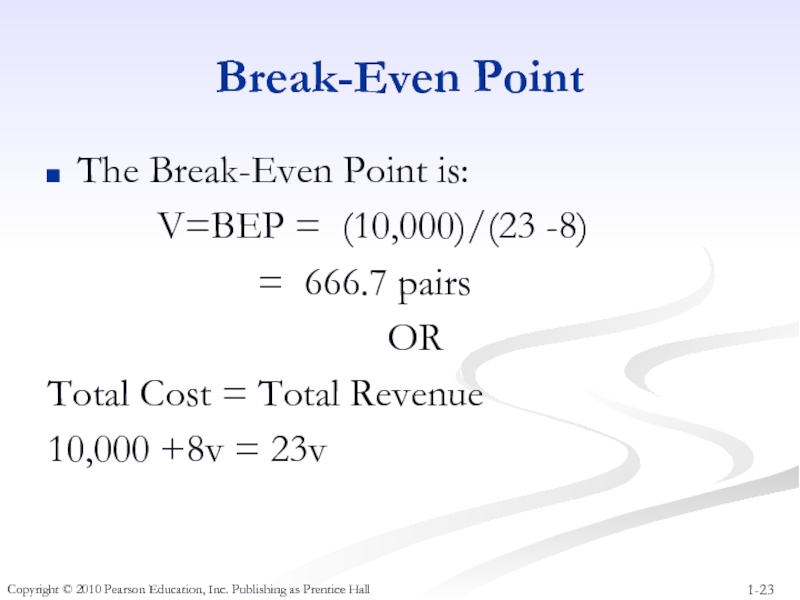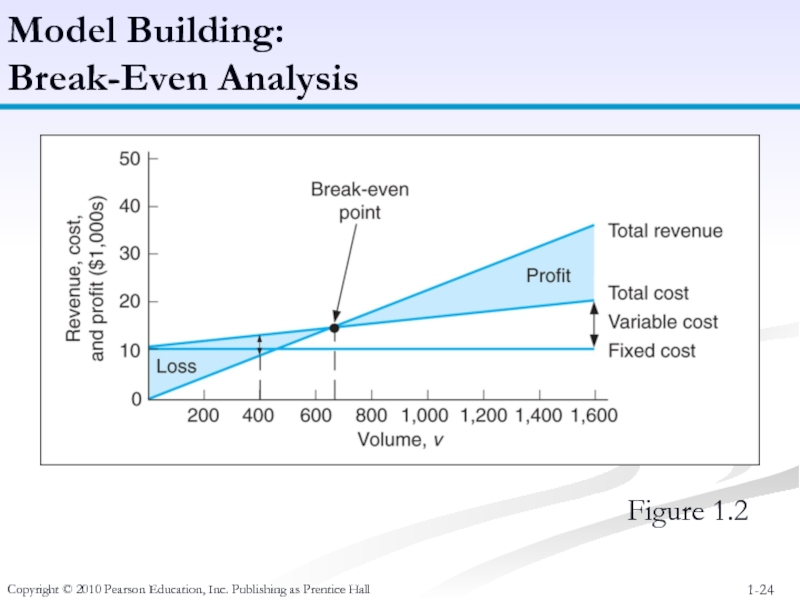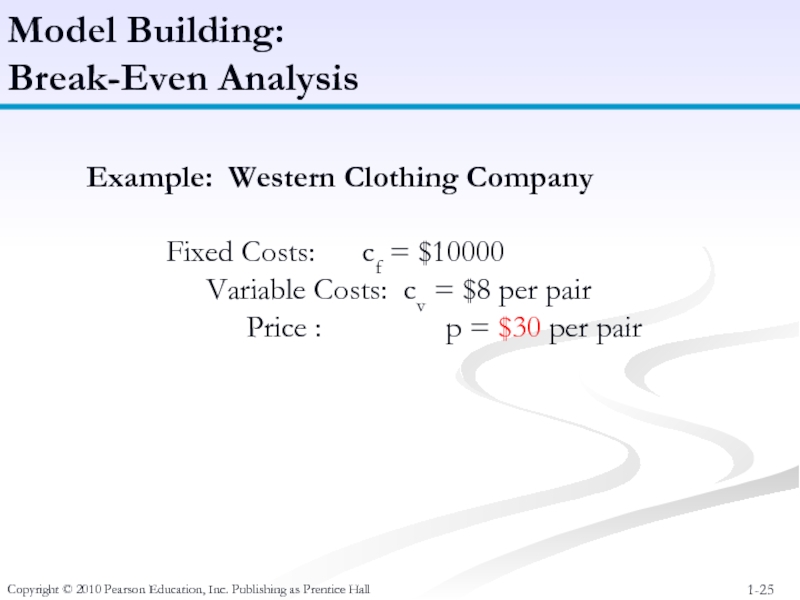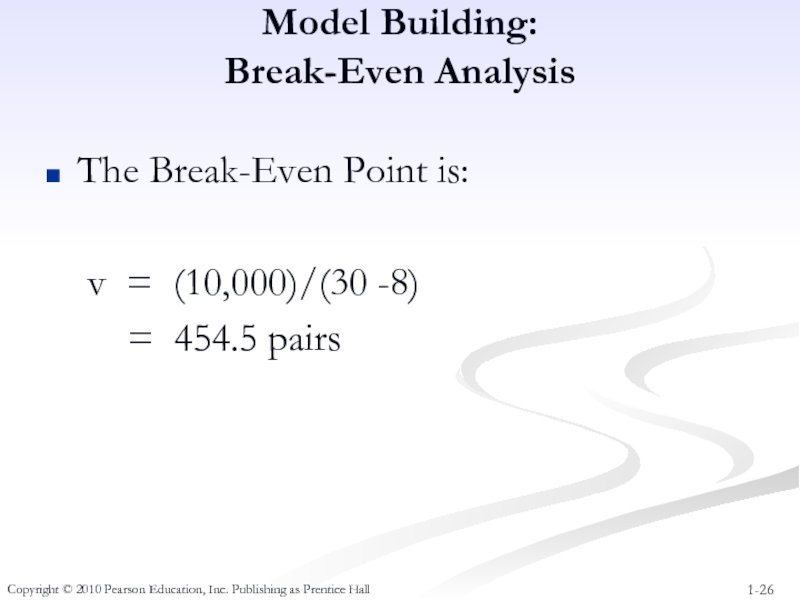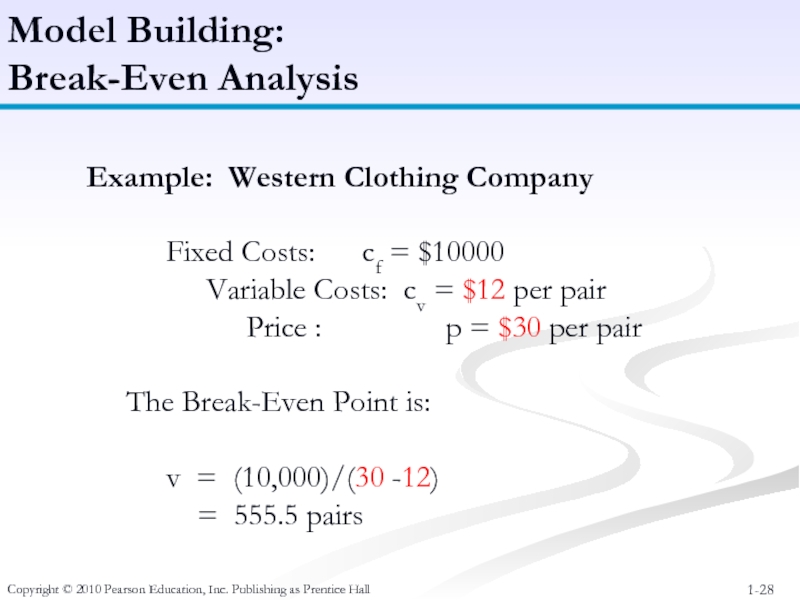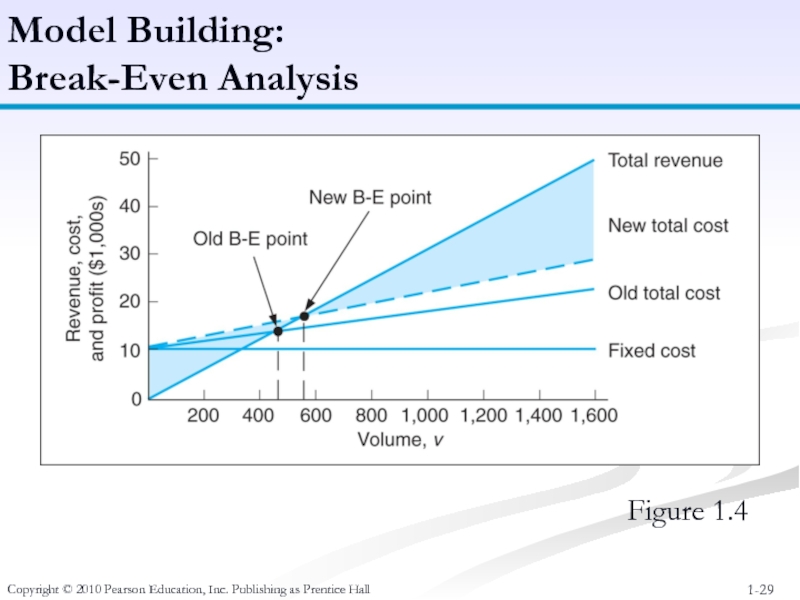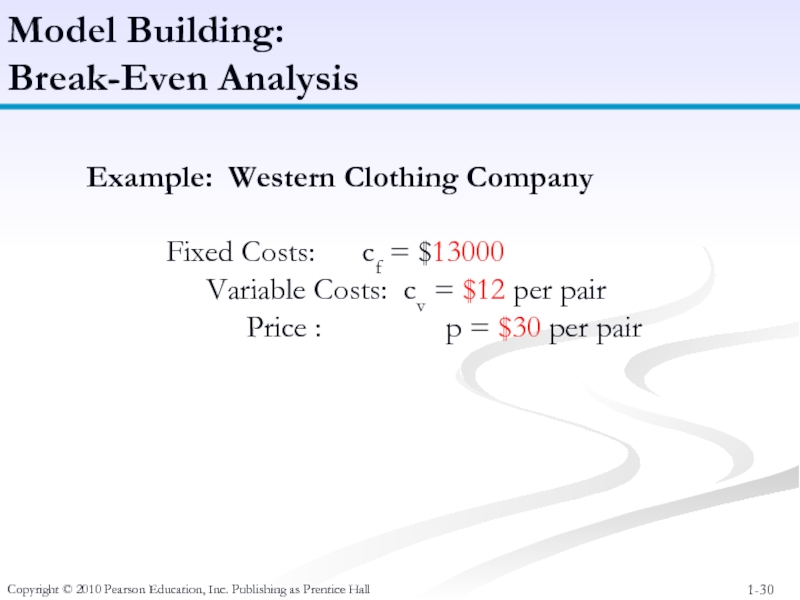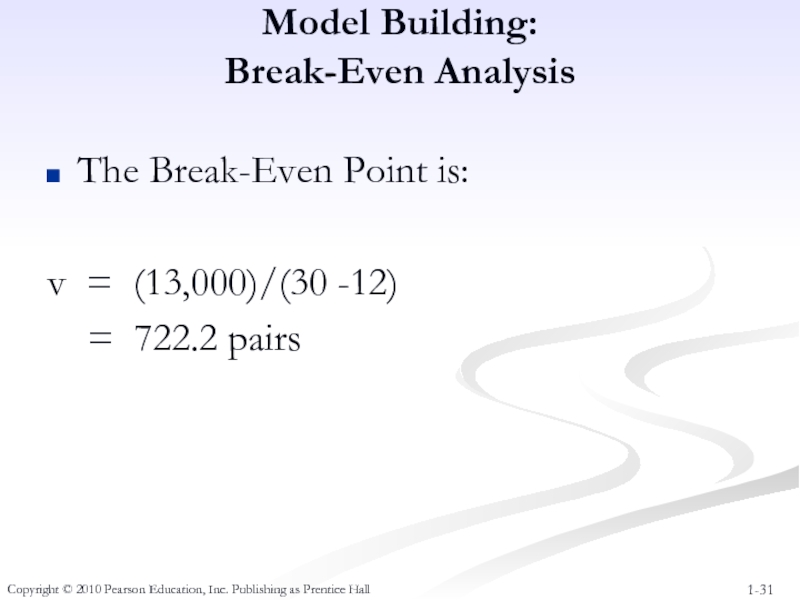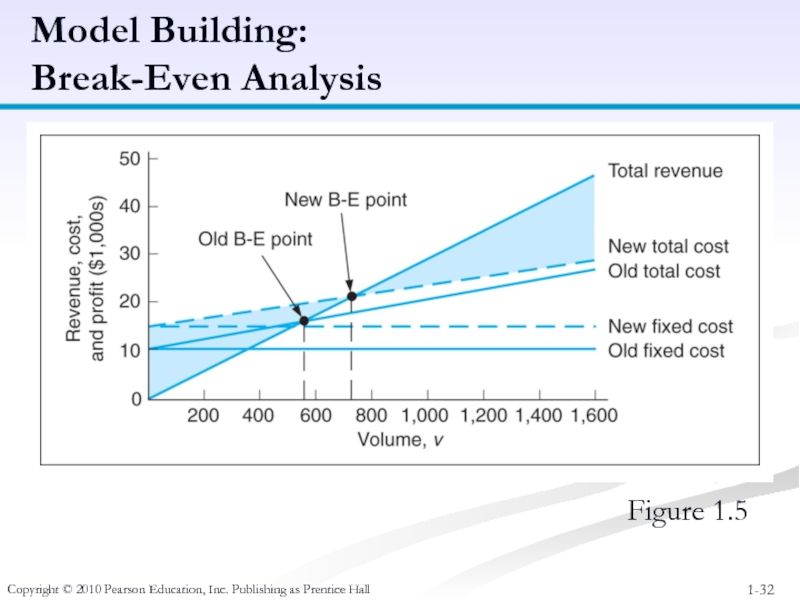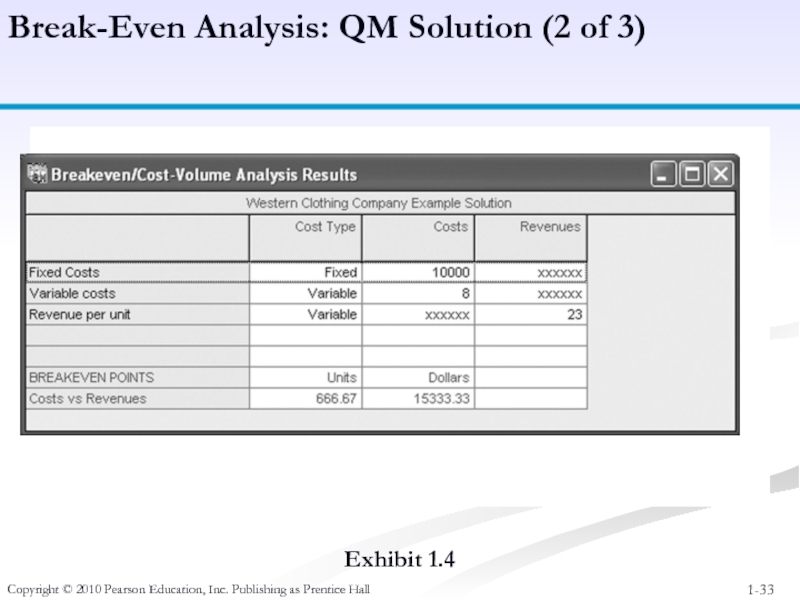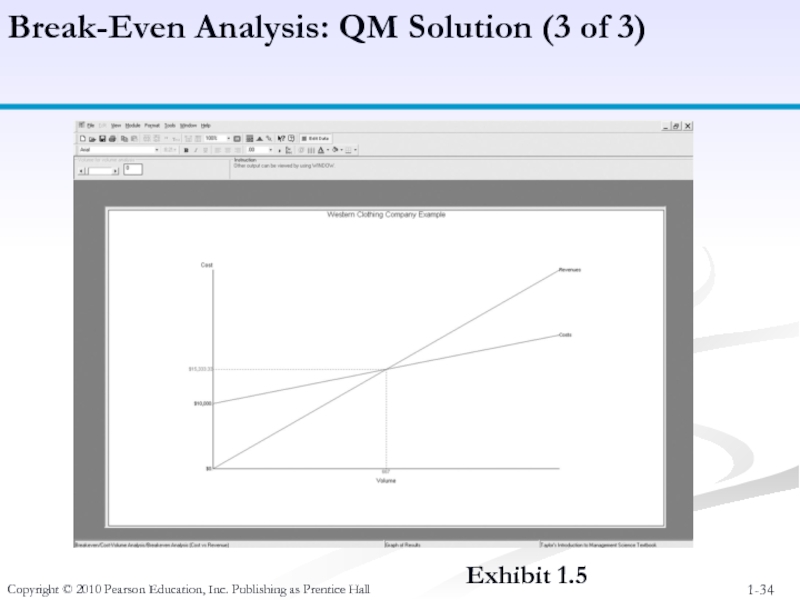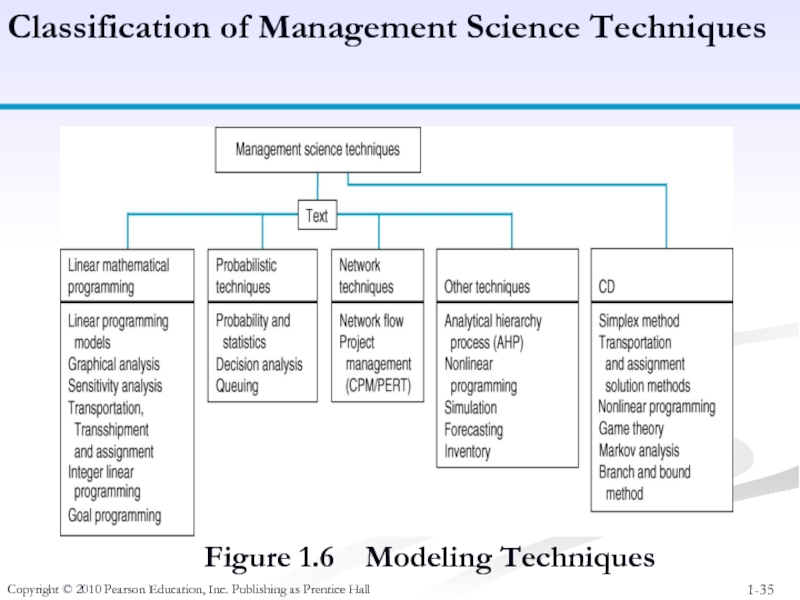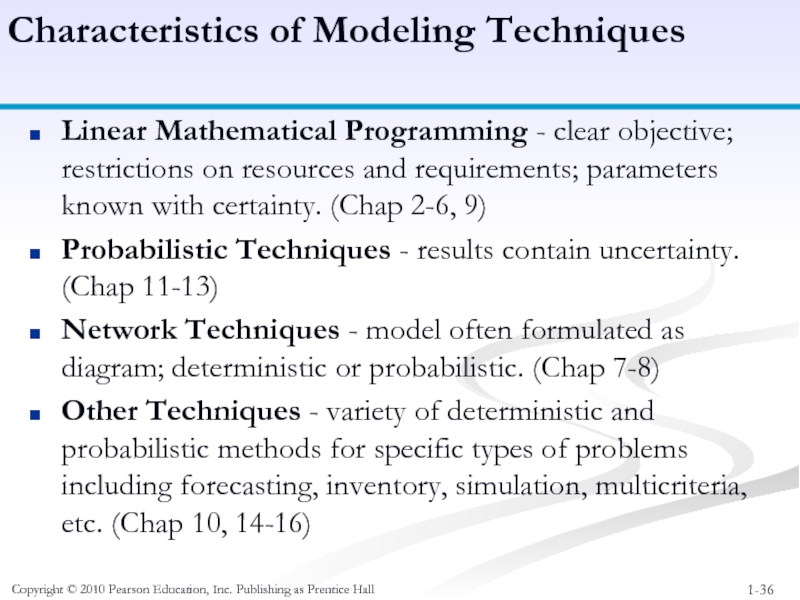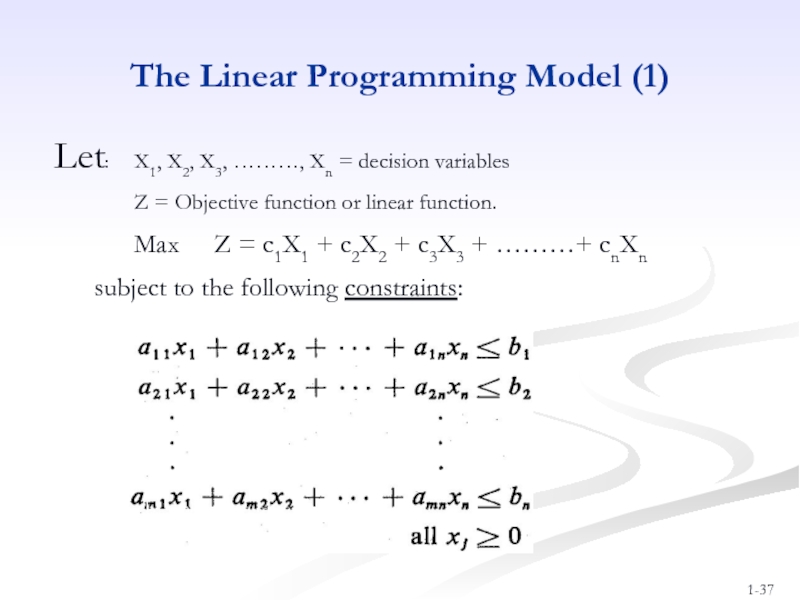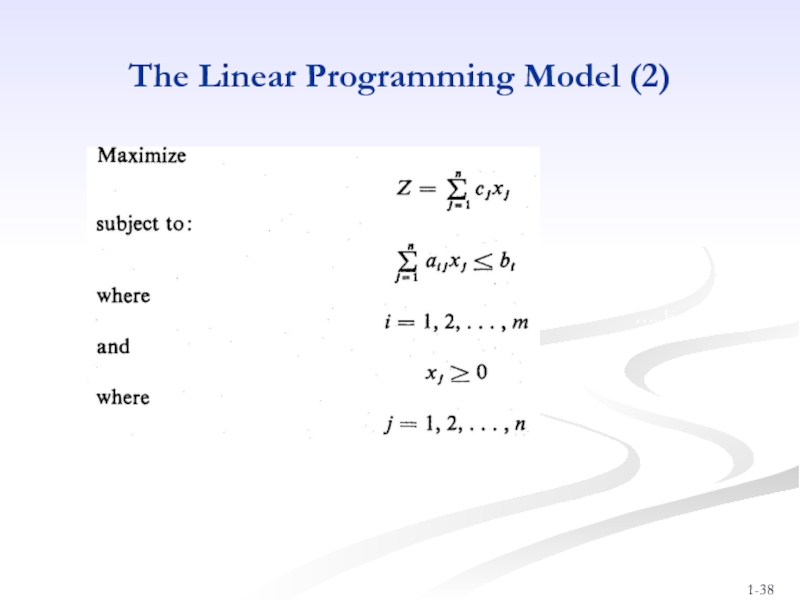- Главная
- Разное
- Дизайн
- Бизнес и предпринимательство
- Аналитика
- Образование
- Развлечения
- Красота и здоровье
- Финансы
- Государство
- Путешествия
- Спорт
- Недвижимость
- Армия
- Графика
- Культурология
- Еда и кулинария
- Лингвистика
- Английский язык
- Астрономия
- Алгебра
- Биология
- География
- Детские презентации
- Информатика
- История
- Литература
- Маркетинг
- Математика
- Медицина
- Менеджмент
- Музыка
- МХК
- Немецкий язык
- ОБЖ
- Обществознание
- Окружающий мир
- Педагогика
- Русский язык
- Технология
- Физика
- Философия
- Химия
- Шаблоны, картинки для презентаций
- Экология
- Экономика
- Юриспруденция
Management Science презентация
Содержание
- 1. Management Science
- 2. Copyright © 2010 Pearson Education, Inc. Publishing
- 3. Text Book Introduction to Management Science
- 4. Learning Outcomes The students who succeed in
- 5. BA 250 Management Science Copyright © 2010 Pearson Education, Inc. Publishing as Prentice Hall
- 6. EVALUATION SYSTEM
- 7. Copyright © 2010 Pearson Education, Inc. Publishing
- 8. Examples of Managerial Problems (Manufacturing)
- 9. Examples of Managerial Problems (Production Scheduling)
- 10. Examples of Managerial Problems (Transportation) A product
- 11. Examples of Managerial Problems (Finance: Portfolio Selection
- 12. Examples of Managerial Problems (Marketing Research)
- 13. Copyright © 2010 Pearson Education, Inc. Publishing
- 14. Copyright © 2010 Pearson Education, Inc. Publishing
- 15. Copyright © 2010 Pearson Education, Inc. Publishing
- 16. Copyright © 2010 Pearson Education, Inc. Publishing
- 17. Copyright © 2010 Pearson Education, Inc. Publishing
- 18. Copyright © 2010 Pearson Education, Inc. Publishing
- 19. Copyright © 2010 Pearson Education, Inc. Publishing
- 20. Copyright © 2010 Pearson Education, Inc. Publishing
- 21. Copyright © 2010 Pearson Education, Inc. Publishing
- 22. Copyright © 2010 Pearson Education, Inc. Publishing
- 23. Break-Even Point The Break-Even Point is:
- 24. Copyright © 2010 Pearson Education, Inc. Publishing
- 25. Copyright © 2010 Pearson Education, Inc. Publishing
- 26. Model Building: Break-Even Analysis The Break-Even
- 27. Copyright © 2010 Pearson Education, Inc. Publishing
- 28. Copyright © 2010 Pearson Education, Inc. Publishing
- 29. Copyright © 2010 Pearson Education, Inc. Publishing
- 30. Copyright © 2010 Pearson Education, Inc. Publishing
- 31. Model Building: Break-Even Analysis The Break-Even
- 32. Copyright © 2010 Pearson Education, Inc. Publishing
- 33. Copyright © 2010 Pearson Education, Inc. Publishing
- 34. Copyright © 2010 Pearson Education, Inc. Publishing
- 35. Copyright © 2010 Pearson Education, Inc. Publishing
- 36. Copyright © 2010 Pearson Education, Inc. Publishing
- 37. The Linear Programming Model (1)
- 38. The Linear Programming Model (2) …..Eq (3)
Слайд 1Management Science
Chapter 1
Copyright © 2010 Pearson Education, Inc. Publishing as Prentice
Слайд 2Copyright © 2010 Pearson Education, Inc. Publishing as Prentice Hall
BA 250
Management science, also known as Operations Research, Quantitative Methods, etc.,
- involves a logical mathematical approach to problem solving.
- used in a variety of organizations to solve many different types of problems in manufacturing, marketing, finance, logistics.
Слайд 3Text Book
Introduction to Management Science
Bernard W. Taylor III,
12th Edition,
Copyright © 2010 Pearson Education, Inc. Publishing as Prentice Hall
Слайд 4Learning Outcomes
The students who succeed in this course;
define basic mathematical
formulate a variety of management problems in marketing, production, logistics and finance
apply basic mathematical optimization models including linear programming and integer programming
interpret the computer output generated from “QM for Windows” to solve linear programming models
analyze various decision making problems under certainty, uncertainty and risk
Copyright © 2010 Pearson Education, Inc. Publishing as Prentice Hall
Слайд 5BA 250 Management Science
Copyright © 2010 Pearson Education, Inc. Publishing as
Слайд 6EVALUATION SYSTEM
First Mid-Term Exam 30
Second Mid-Term Exam 30
Final Exam 40
TOTAL 100
% OF SEMESTER WORK 60
% OF FINAL WORK 40
TOTAL 100
Слайд 7Copyright © 2010 Pearson Education, Inc. Publishing as Prentice Hall
Chapter 1
Examples of Managerial Problems
The Management Science Approach to Problem Solving
Mathematical Modeling with a simple example
Model Building: Break-Even Analysis
Classification of Management Science Techniques
Introduction to Linear Programming
Слайд 8Examples of Managerial Problems
(Manufacturing)
A manufacturer has fixed amounts of
These resources can be combined to produce any one of several different products.
The quantity of the resource i required to produce one unit of the product j is known.
The problem is to determine the quantity of products to produce so that total income can be maximized.
Слайд 9Examples of Managerial Problems
(Production Scheduling)
A manufacturer knows that he must
They can be produced either in regular time, subject to a maximum each month, or in overtime. The cost of producing an item during overtime is greater than during regular time. A storage cost is associated with each item not sold at the end of the month.
The problem is to determine the production schedule that minimizes the sum of production and storage costs.
Слайд 10Examples of Managerial Problems
(Transportation)
A product is to be shipped in the
The cost of shipping a unit from the ith origin to the jth destination is known for all combinations of origins and destinations.
The problem is to determine the amount to be shipped from each origin to each destination such that the total cost of transportation is a minimum.
Слайд 11Examples of Managerial Problems
(Finance: Portfolio Selection Problem)
___________________________________________________________________________
Operations
Maximization of expected return
Alternative investments (shares, bonds, etc.)
Mutual funds, credit unions, banks, insurance companies
Minimization of risk
Слайд 12Examples of Managerial Problems
(Marketing Research)
___________________________________________________________________________
Operations Research © Jan
Evaluating consumer’s reaction to new products
and services
Prepare a campaign with door-to-door personal interviews about households’ opinion
Households: with children
without children
Time of interview: daytime, evening
Слайд 13Copyright © 2010 Pearson Education, Inc. Publishing as Prentice Hall
Figure 1.1
The
Слайд 14Copyright © 2010 Pearson Education, Inc. Publishing as Prentice Hall
Steps in
Observation - Identification of a problem that exists (or may occur soon) in a system or organization.
Definition of the Problem - problem must be clearly and consistently defined, showing its boundaries and interactions with the objectives of the organization.
Model Construction - Development of the functional mathematical relationships that describe the decision variables, objective function and constraints of the problem.
Model Solution - Models solved using management science techniques.
Model Implementation - Actual use of the model or its solution.
Слайд 15Copyright © 2010 Pearson Education, Inc. Publishing as Prentice Hall
Information and
Business firm makes and sells a steel product
Product costs $5 to produce
Product sells for $20
Product requires 4 pounds of steel to make
Firm has 100 pounds of steel
Business Problem:
Determine the number of units to produce to make the most profit, given the limited amount of steel available.
Example of Model Construction (1 of 3)
Слайд 16Copyright © 2010 Pearson Education, Inc. Publishing as Prentice Hall
Variables: X =
Z = total profit (in $)
Model: Z = $20X - $5X (objective function)
4X = 100 lb of steel (resource constraint)
Parameters: $20, $5, 4 lbs, 100 lbs (known values)
Formal Specification of Model:
maximize Z = $20X - $5X
subject to 4X = 100
Example of Model Construction (2 of 3)
Слайд 17Copyright © 2010 Pearson Education, Inc. Publishing as Prentice Hall
Example of
Solve the constraint equation:
4x = 100
(4x)/4 = (100)/4
x = 25 units
Substitute this value into the profit function:
Z = $20x - $5x
= (20)(25) – (5)(25)
= $375
(Produce 25 units, to yield a profit of $375)
Model Solution:
Слайд 18Copyright © 2010 Pearson Education, Inc. Publishing as Prentice Hall
Model Building:
Break-Even
Used to determine the number of units of a product to sell or produce that will equate total revenue with total cost.
The volume (number of products produced) at which total revenue equals total cost is called the break-even point.
Profit at break-even point is zero.
Слайд 19Copyright © 2010 Pearson Education, Inc. Publishing as Prentice Hall
Model Components
Fixed
Variable Cost (cv) - unit production cost of product. (including raw material, labor, resources, packaging, material handling, transportation)
Volume (V) – the number of units produced or sold
Total variable cost (Vcv) - function of volume (v) and unit variable cost.
Model Building:
Break-Even Analysis
Слайд 20Copyright © 2010 Pearson Education, Inc. Publishing as Prentice Hall
Model Components
Total
Profit (Z) - difference between total revenue vp (p = unit price) and total cost, i.e.
Model Building:
Break-Even Analysis
Слайд 21Copyright © 2010 Pearson Education, Inc. Publishing as Prentice Hall
Model Building:
Break-Even
Computing the Break-Even Point
The break-even point is that volume at which total revenue equals total cost and profit is zero:
The break-even point
Слайд 22Copyright © 2010 Pearson Education, Inc. Publishing as Prentice Hall
Model Building:
Break-Even
Example: Western Clothing Company
Fixed Costs: cf = $10000
Variable Costs: cv = $8 per pair
Price : p = $23 per pair
Слайд 23Break-Even Point
The Break-Even Point is:
V=BEP
= 666.7 pairs
OR
Total Cost = Total Revenue
10,000 +8v = 23v
Copyright © 2010 Pearson Education, Inc. Publishing as Prentice Hall
Слайд 24Copyright © 2010 Pearson Education, Inc. Publishing as Prentice Hall
Model Building:
Break-Even Analysis
Figure 1.2
Слайд 25Copyright © 2010 Pearson Education, Inc. Publishing as Prentice Hall
Model Building:
Break-Even
Example: Western Clothing Company
Fixed Costs: cf = $10000
Variable Costs: cv = $8 per pair
Price : p = $30 per pair
Слайд 26Model Building:
Break-Even Analysis
The Break-Even Point is:
v = (10,000)/(30 -8)
=
Copyright © 2010 Pearson Education, Inc. Publishing as Prentice Hall
Слайд 27Copyright © 2010 Pearson Education, Inc. Publishing as Prentice Hall
Model Building:
Break-Even Analysis
Figure 1.3
Слайд 28Copyright © 2010 Pearson Education, Inc. Publishing as Prentice Hall
Model Building:
Break-Even
Example: Western Clothing Company
Fixed Costs: cf = $10000
Variable Costs: cv = $12 per pair
Price : p = $30 per pair
The Break-Even Point is:
v = (10,000)/(30 -12)
= 555.5 pairs
Слайд 29Copyright © 2010 Pearson Education, Inc. Publishing as Prentice Hall
Model Building:
Break-Even
Figure 1.4
Слайд 30Copyright © 2010 Pearson Education, Inc. Publishing as Prentice Hall
Model Building:
Break-Even
Example: Western Clothing Company
Fixed Costs: cf = $13000
Variable Costs: cv = $12 per pair
Price : p = $30 per pair
Слайд 31Model Building:
Break-Even Analysis
The Break-Even Point is:
v = (13,000)/(30 -12)
=
Copyright © 2010 Pearson Education, Inc. Publishing as Prentice Hall
Слайд 32Copyright © 2010 Pearson Education, Inc. Publishing as Prentice Hall
Model Building:
Break-Even
Figure 1.5
Слайд 33Copyright © 2010 Pearson Education, Inc. Publishing as Prentice Hall
Break-Even Analysis:
Exhibit 1.4
Слайд 34Copyright © 2010 Pearson Education, Inc. Publishing as Prentice Hall
Break-Even Analysis:
Exhibit 1.5
Слайд 35Copyright © 2010 Pearson Education, Inc. Publishing as Prentice Hall
Figure 1.6
Classification of Management Science Techniques
Слайд 36Copyright © 2010 Pearson Education, Inc. Publishing as Prentice Hall
Linear Mathematical
Probabilistic Techniques - results contain uncertainty. (Chap 11-13)
Network Techniques - model often formulated as diagram; deterministic or probabilistic. (Chap 7-8)
Other Techniques - variety of deterministic and probabilistic methods for specific types of problems including forecasting, inventory, simulation, multicriteria, etc. (Chap 10, 14-16)
Characteristics of Modeling Techniques
Слайд 37The Linear Programming Model (1)
Let: X1, X2, X3, ………, Xn =
Z = Objective function or linear function.
Max Z = c1X1 + c2X2 + c3X3 + ………+ cnXn
subject to the following constraints:
where aij, bi, and cj are given constants.

